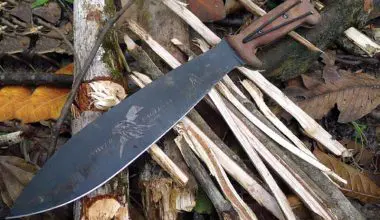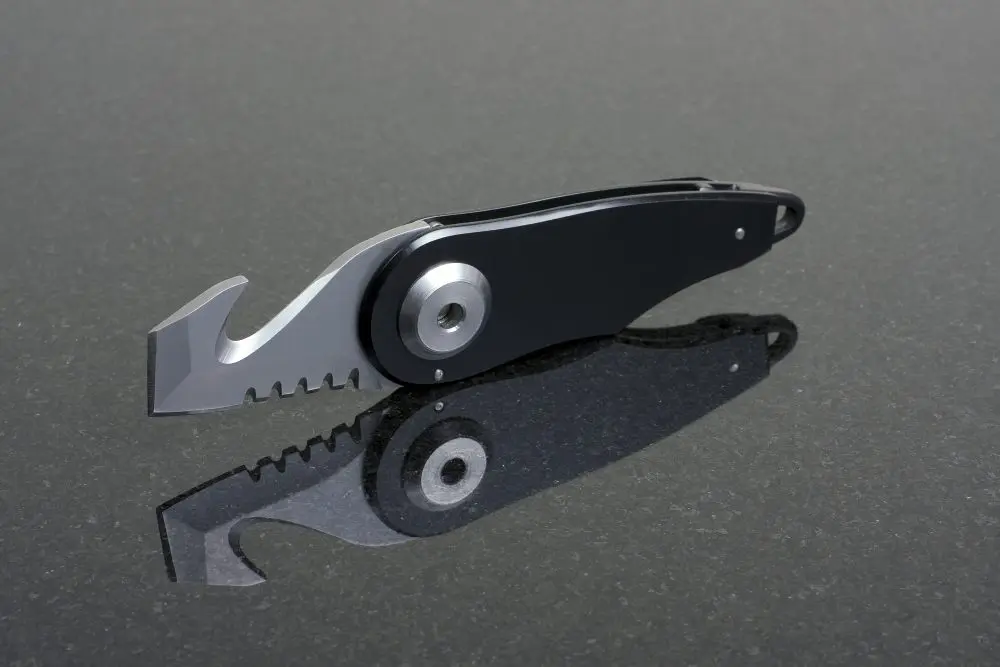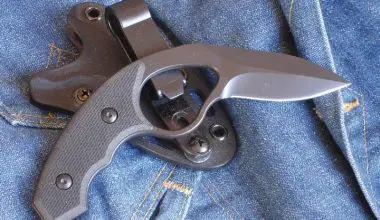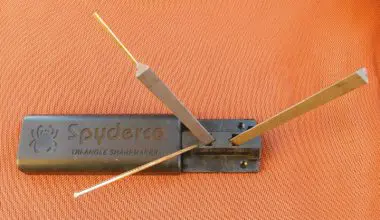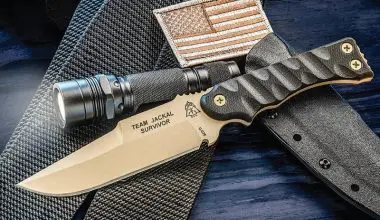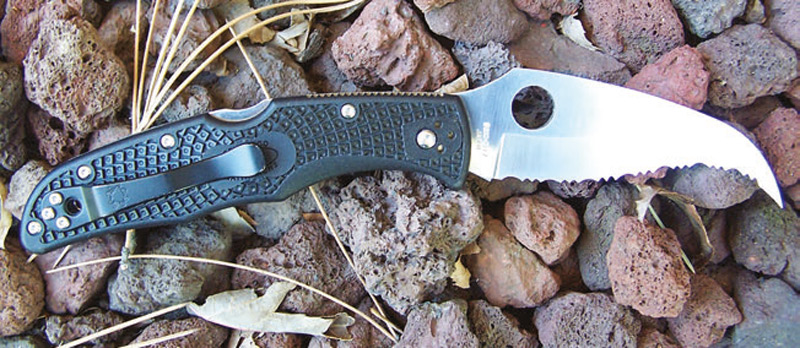
THE Spyderco Matriarch2 is specifically designed, and purpose- built, to be valuable for close-in defense. It exhibits fresh concepts and sound engineering that have been enhanced by evolutionary upgrades based on field experience.
A reverse curve or hook-billed knife is usually built for a particular purpose. Some, such as the Chilean elite forces Corvo, are adapted from an agricultural tool and would not be my first choice as a defensive weapon, because thrusting cuts are difficult—about like trying to thrust with a very large roofing knife.
There is good reason, however, that nature has supplied feline and other carnivores with curved claws. Predators so equipped can make deep slashing cuts with small, relatively dull implements.
Man is not so equipped, but luckily is not limited to working with natural equipment, and the innovative folks at Spyderco have done some very diplomatic engineering and produced a defensive folder that delivers the slashing advantages of a hooked blade without losing the ability to deliver effective thrusting cuts when necessary.
In both public safety and agricultural settings, the commonest use of a serrated blade is to cut textiles: seat belts, heavy clothing, tarps and canvas goods, snarled line and parachute cord. There are few knife fights in a nudist colony because nobody has a way to carry a knife, but in normal settings when a knife is employed as a weapon, before it cuts the intended target it must first cut through one-to-several light-to-heavy layers of textile or leather.
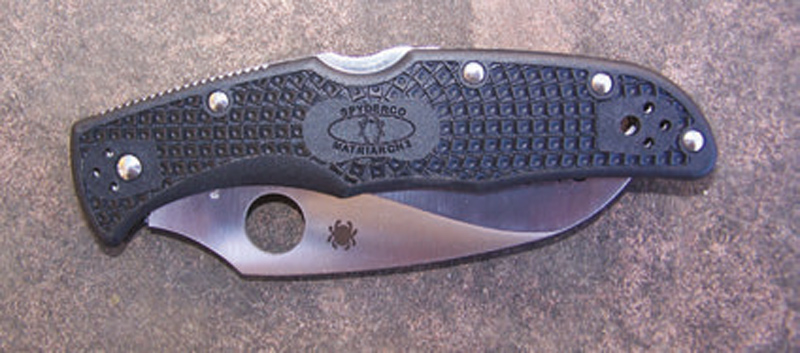
Thus as a defensive tool, a hooked blade can be a good thing, because the cutting edge is presented at an optimal angle to cut through fabric and beyond. The best enhancement for a short blade designed to cut through any kind of fiber is to serrate it.
Spyderco is an industry leader in serrated blades, and this enhancement is applied full length on the Matriarch2, right up to the tip. Although full serrations are not best on a general working blade, an additional advantage to a serrated blade in this instance is that, when cutting difficult materials such as fabric—and flesh—even a dull serrated blade will cut such materials better than will most sharp straight blades, simply because a serrated blade in effect presents a series of manifold small blades, all at the best angle to cut the work-piece.
Combine that principle with the spooky-sharp factory edge Spyderco puts on their blades, and the Matriarch2 is good to go as a weapon or tool.
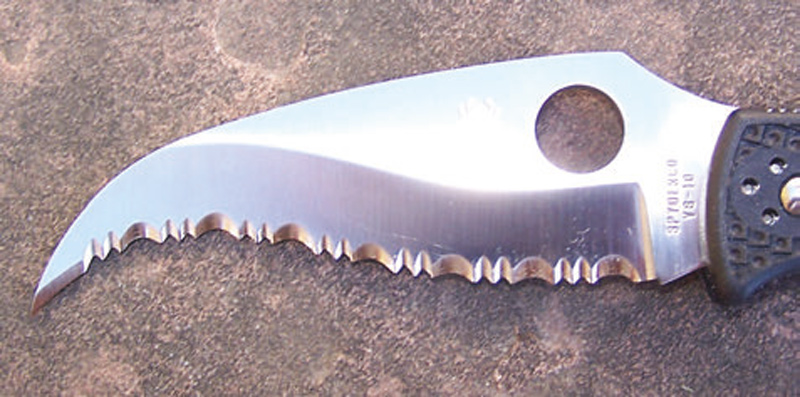
As historical knives go, the distinctive Reverse S blade silhouette (for which Spyderco holds patents) is a fairly new development, but the Matriarch2 has some Spyderco history behind it.
It was originally developed per request from a federal narcotics task force whose agents had to operate undercover and without firearms, but who needed a defensive weapon that could be effective with average motor skills and scant training.
The original model was the C12 Civilian, followed by various evolutionary changes in finessing the design and upgrading the materials. Essentially, the Civilian-style blade was combined with the Endura handle to become the Matriarch. This was later combined with the Endura4 handle to become the Matriarch2, which features skeletal stainless liners with a fiberglass-reinforced nylon handle that is positively but comfortably textured for a secure grip in the mud and the blood. The blade is locked open by a secure back-lock mechanism profiled to preclude inadvertent release.
The slim cross-section of the blade and handle, plus the variety of clipmounting positions, make for unlimited discrete-carry options.
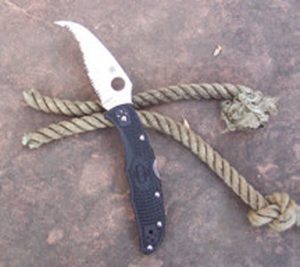
For public safety work, this unit will securely ride anywhere on your LBE or duty gear that suits you for cutting seat belts, flex cuffs or clothing. For rescue work, the hooked tip helps to precisely engage only the work-piece.
The blade moves on phosphor bronze washers that ensure precise, fluid deployment. It opens quickly in either hand via Spyderco’s trademark thumbhole. The blade itself is made from VG-10 stainless, hollow ground and fully serrated.
Like most Spyderco blades, the Matriarch2 is assembled with Torx®-drive pan-head screws, which allow the hourglass clip to be changed to various positions, providing a variety of ambidextrous carry options to suit the user, mission, and purpose: right-side, leftside, tip or tip-down carry.
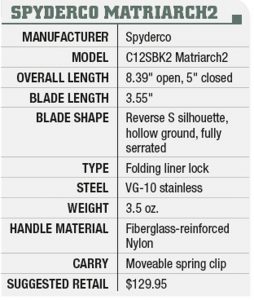
Two abusive materials for testing the cutting and edge-holding ability of a blade are nasty used carpet and 32# double- faced corrugated cardboard. Used carpet is good because it’s full of abrasive dirt and contains tough synthetic fibers. Cardboard is good because it has the ability to quickly dull most blades.
In a qualitative test, we cut up a pile of old carpet, waded through enough cardboard that a conventional blade would have required a couple of sharpenings, then attacked a tire casing, and finally sliced nylon straps, synthetic cordage and old tarps. A conventional blade sharpens more quickly, but the tradeoff is that when used for its intended purposes, as opposed to our knuckle- dragging abuse, the Matriarch2’s serrated blade will go a long time before it needs touching up.
If you have to look at, or look for, a defensive blade, you have lost valuable time—and these just may be the nanoseconds wherein an aggressor is deciding if he will continue the attack or back off because of your well-armed response.
The Matriarch2 falls readily to the hand, and the blade deploys easily, quickly, and locks positively—exactly what you want in a defensive folder.
